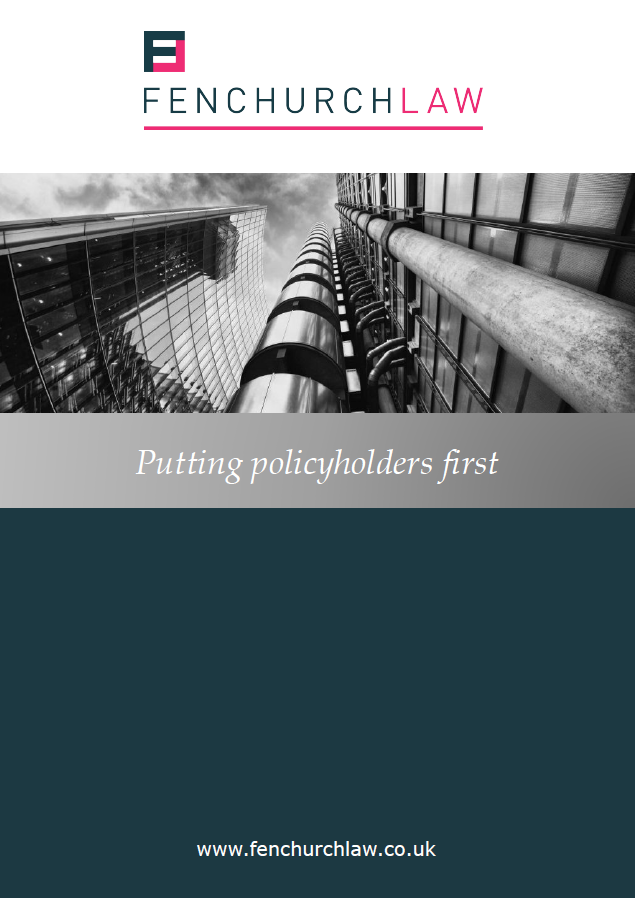
“When the lie is dishonest but the claim is not” – collateral lies and dishonest exaggerations
Two recent Supreme Court judgments have considered the impact of dishonesty – on an insurance claim and on a settlement agreement.
In one, where ship owners sought to embellish their insurance claim through the inclusion of a false, but irrelevant, statement, the court held that the owners were nevertheless able to recover under their insurance policy.
In the other, evidence that an employee had dishonestly exaggerated the extent of injuries sustained in the work place entitled his employer’s insurers to set aside a settlement entered into with him before that evidence was available.
Through their differing outcomes, these cases serve to illustrate that, while the courts remain as ready as ever to take a strong stance whenever there is evidence of fraud, nevertheless and in line with the current trend towards a more level playing field for policyholders, where “the lie is dishonest but the claim is not”, for an insurer to avoid all liability for the claim will not be an appropriate sanction.
Versloot Dredging BV v HDI Gerling Industrie Versicherung AG
In Versloot Dredging BV v HDI Gerling Industrie Versicherung AG, the owners of a ship damaged by a flood in the engine room made a false statement that the bilge alarm had sounded. The Supreme Court found that this did not prevent the ship owners from being able to recover under their insurance policy. This was because, although the lie was dishonest, the claim was genuine. On the facts, the policy would have responded in the same way and for the same amount whether or not the statement was true. The dishonest statement did not therefore go to the recoverability of the claim, and was not material. The insurer was required to meet the liability, which was a liability that it had always had.
This type of dishonest statement was previously known as a “fraudulent device” and is now termed a “collateral lie”. The question for the court was whether collateral lies, statements that dishonestly strengthen what would otherwise be entirely genuine claims, constitute “fraudulent claims”. Fraudulent claims entitle the insurer to avoid liability. They encompass both claims that have been fabricated in their entirety and claims that have been dishonestly exaggerated as to their amount. Following the judgment in Versloot Dredging it is now clear that collateral lies no longer fall to be considered as a further category of fraudulent claim and will not entitle an insurer to reject the claim.
The scope of ‘fraudulent claims’, and in particular whether it extends to collateral lies, was an issue that had been left open by the wording of the Insurance Act 2015 (the Act). The Act, which applies to policies entered into after 12 August 2016, sets out an insurer’s remedies for fraudulent claims. These include the right not to pay the claim and the right to recover from the insured any sums paid by the insurer. The decision in Versloot Dredging has resolved the uncertainty as to whether a collateral lie would be caught by the Act. It is now clear it is not. Where a policyholder seeks to strengthen a genuine claim with a collateral lie, if that collateral lie is immaterial to the insured’s right of recovery, the insurer is not entitled to avoid the claim.
Hayward v Zurich Insurance Company plc
By contrast, Hayward v Zurich Insurance Company plc demonstrates that, in line with the usual maxim, fraud will still unravel all. In this case, by dishonestly exaggerating his injuries, an employee had obtained a settlement from his employer’s insurer that was significantly higher in value than what he would otherwise have recovered. When conclusive evidence proving the dishonesty later emerged, the insurer sought to set aside the settlement. To do so, it was necessary for the insurer to show that it had been induced by the misrepresentation as to the extent of the injuries to enter into the settlement. The issue for the Supreme Court was whether the insurer could still be said to have been induced by the misrepresentation in circumstances where, at the time of entering into the settlement, the insurer suspected that the employee was dishonestly exaggerating his injuries. The court found that it was sufficient that the misrepresentations were a material cause of the insurer entering into the settlement. There was no requirement for the insurer to have believed the misrepresentations to be true and the settlement could consequently be set aside.
Significantly, in Hayward, where the Supreme Court was considering the impact of the fraud on a settlement agreement not an insurance policy, the employee remained entitled to damages for his actual, albeit modest, injury. Were the same type of dishonest exaggeration to occur in the context of a claim made under an insurance policy, it would constitute a fraudulent claim for which a policyholder could not recover anything at all, whether at common law or under the new statutory regime.
See Versloot Dredging BV v HDI Gerling Industrie Versicherung AG [2016] UKSC 45; Hayward v Zurich Insurance Company plc [2016] UKSC 48.
Joanna Grant is a Partner at Fenchurch Law.
Other news
Timing is everything – Makin v QBE and the cost of not complying with a condition precedent
3 July 2025
This recent decision from the High Court provides a powerful reminder of the consequences of not complying with a…
You may also be interested in:
Archives
Categories
- Business Development
- Construction & Property Risks
- News
- International Risks
- Legislation
- Financial & Professional Risks
- Case Law
- Professional Risks
- Press Release
- Uncategorized
- The Good, the Bad and the Ugly
- Fenchurch Law Webinars
- Stonegate
- Newsletter
- Events
- Webinars
- Comparing German and English Insurance Law – A Series
- Construction Risks
- Operations



